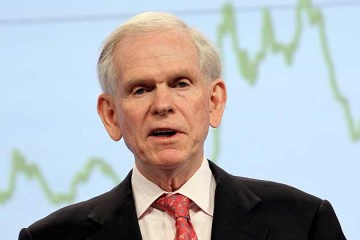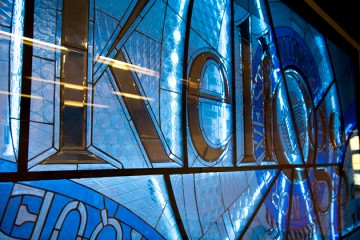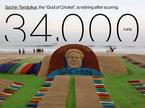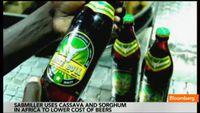Cover Story
INSIDE MICROSOFT
The untold story of how the Internet forced Bill Gates to reverse course
Oh, our eyes have seen the glory of the coming of the Net,
We are ramping up our market share, objectives will be met.
Soon our browser will be everywhere, you ain't seen nothin' yet,
We embrace and we extend!
Battle Hymn of the Reorg
Anonymous Microsoft employee
MicroNews, the in-house newsletter
It's nearly 6:30 p.m. on a Friday in mid-May. Microsoft Corp.'s lush campus looks like one of Monet's paintings--a landscape afire with the rich purples and electric pinks of springtime flowers. But no one seems to notice. In the 800-person tools division, where they make products to help developers create software, nearly half the programmers are still hunched over computers, even though for many it's now hour 13 of the workday. Empty cups of espresso and the sleeping bags hooked to the backs of doors speak volumes about the night ahead. And the next night and the next. And probably the next year.
Microsoft, already the ultimate hardcore company, is entering a new dimension. It's called Internet time: a pace so frenetic it's like living dog years--each jammed with the events of seven normal ones. Microsoft employees are pulling all-nighters to make up for the precious time the company has lost to Internet go-getters such as Netscape Communications Corp. and Sun Microsystems Inc. "O.K., so we missed the first round of the Internet. Bummer," says Cornelius Willis, Microsoft's product manager for Internet tools. "But we're mobilized now!"
Until six months ago, it looked as if Microsoft might, in fact, be lost in cyberspace. It was so far behind Internet upstarts that industry analysts wondered if the company whose software dominated the PC era might be sidelined in a new age of Internet computing.
It's easy to see how Microsoft might have missed the warning signs. In the early 1990s, while the Net was making its amazing transformation from a nerd's network to a global communications and computing medium, Microsoft was growing explosively, tripling sales, to $3.8 billion, and boosting its payroll from 5,600 to 14,400 between 1990 and 1993--all thanks to the success of Windows.
By 1993, techno-hipsters were discovering something called the World Wide Web. It let you display graphics and photos on the Net and most important, let you jump from one Net computer to another by clicking on a highlighted word. At Microsoft headquarters in Redmond, Wash., however, the Net was little more than a curiosity. "I wouldn't say it was clear it was going to explode over the next couple of years," says Chairman William H. Gates III. "If you'd asked me then if most TV ads will have URLs [Web addresses] in them, I would have laughed."
"DRIVING EVERYTHING." Even if Gates and his executives had had an inkling of the Web's trajectory, they had more pressing concerns. Government regulators were in the midst of a huge probe into Microsoft's alleged anticompetitive practices. A hush-hush group was creating a service to rival America Online Inc. Another was building Information Superhighway goodies--video servers for interactive TV, programs for settop boxes, and so on. Most importantly, legions of programmers were jamming to finish what would become Windows 95.
Microsoft's public reaction to the Web remained muted until last fall, when the Web's momentum was too great to ignore--as was the threat to Microsoft. Some 20 million people were surfing the Net without using Microsoft software. Worse, the Web--with a boost from Sun Microsystems' Java programming language--was emerging as a new "platform" to challenge Windows' hegemony on the PC.
Gates had had enough. On Dec. 7, he staged an all-day program for analysts, journalists, and customers to show that Microsoft had every intention of playing--and winning--in the new software game. It would make Web browsers, Web servers, and "Web-ize" existing Microsoft programs. It would even license Sun's Java--whatever it took.
Since then, everybody in Redmond has been on Internet time. Net projects are under way in every corner of the 35-building campus. The Internet Platform & Tools Div., created in February, has swelled to 2,500 employees--more than Netscape, Yahoo!, and the next five Net upstarts combined. Slate, a high-profile Web magazine edited by Michael Kinsley, debuted on June 24. MSNBC, a cable news channel/Web site being produced with NBC Inc., begins on July 15. And Microsoft Network will be reborn as a mega-Web site this fall. Says Gates: "The Internet is the most important thing going on for us. It's driving everything. There is not one product we have where it's not at the center."
The impact of those products has yet to be felt, but the speed and intensity of Microsoft's offensive has already changed the calculus of competitors and analysts. "People aren't asking anymore if Microsoft will be killed by the Internet but whether Microsoft will dominate the Internet," says Scott Winkler, vice-president at market researcher Gartner Group Inc.
Indeed, in just six months, Gates has done what few executives have dared. He has taken a thriving, $8 billion, 20,000-employee company and done a massive about-face. "I can't think of one corporation that has had this kind of success and after 20 years, just stopped and decided to reinvent itself from the ground up," says Jeffrey Katzenberg, a principal of DreamWorks SKG, which has a joint venture with Microsoft. "What they're doing is decisive, quick, breathtaking."
Gates, a keen student of business history, has been intensely aware of how other market-leading companies--from General Motors Corp. to IBM--have stumbled when their top executives failed to read the signs of fundamental change in their industries. Tackling that problem was a prominent theme in his best-seller, The Road Ahead, published last fall. "I don't know of any examples where a leader was totally energized and focused on the new opportunities where they totally missed it," he says.
Our competitors were laughing, said our network was a fake,
Saw the Internet economy as simply theirs to take.
They'll regret the fateful day
The sleeping giant did awake,
We embrace and we extend!
Here, for the first time, is the inside story of Microsoft's dramatic turnabout. It's a tale full of twists, turns, miscues, and even a fatefully timed illness. And it's a story of how three young programmers became Net preachers, spreading the gospel and peppering management with E-mail that eventually helped get Gates and his team to act.
The Web-izing of Microsoft begins in February, 1994, when Steven Sinofsky, Gates's technical assistant, returned to his alma mater, Cornell University, on a recruiting trip. Snowed in at the Ithaca (N.Y.) airport, he headed back to the Cornell campus. That's when he saw it: students dashing between classes, tapping into terminals, and getting their E-mail and course lists off the Net.
The Internet had spread like wildfire. It was no longer the network for the technically savvy--as it had been seven years earlier when Sinofsky was studying there--but a tool used by students and faculty to communicate with colleagues on campus and around the world. He dashed off a breathless E-mail message called "Cornell is WIRED!" to Gates and his technical staff.
The response from one of Gates's staff: Someone in networking has been "bugging us about this same stuff. Maybe you should get together." The other guy was J. Allard. While being recruited in 1991, the cherub-faced programmer had worried whether Microsoft "had a clue about the Internet." He signed on anyway, figuring he could help make the company hip to the Net. In 1992, Allard was the only Microsoft programmer who had it on his business card: Program Manager, Internet Technologies. "I was a lonely voice," he recalls.
FIXING BUGS. Allard's job was building TCP/IP, the Net communications format, into Microsoft LAN Manager and Windows for Workgroups. TCP/IP had long been standard on the Unix computers made by companies such as Sun Microsystems. But for Microsoft, says Allard, it was just a "checkbox item"--ordered by Executive Vice-President Steven A. Ballmer. "I don't know what it is. I don't want to know what it is. My customers are screaming about it. Make the pain go away," Allard recalls Ballmer saying.
In an unsanctioned project in early 1993, Allard oversaw the development of Microsoft's first Internet server--a computer that could link Microsoft to other Net sites. It was programmed to distribute test copies of the TCP/IP code to customers. Soon, they were posting other bug fixes, and it became one of the 10 most-used servers on the Net.
Little of this was registering with top management, though. Gates, then 37, and his lieutenants had never seen the Net in use the way the incoming legions of twentysomethings had. And with so much riding on the Windows rewrite, they had little time for new projects.
Allard was increasingly frustrated. The Net was abuzz over Mosaic, a "browser" program created by a precocious computer-science undergraduate at the University of Illinois and posted on the Net for anyone to download. Suddenly, the Web had an easy, point-and-click format--for the masses. On Jan. 25, 1994, he penned a call-to-arms memo titled "Windows: The Next Killer Application for the Internet."
Allard recommended building a Mosaic-like browser and including TCP/IP in Chicago, the code name for what became Win95. This memo also introduced the language that would become Microsoft's battle cry nearly two years later: "Embrace" Internet standards, and "extend" Windows to the Net. Says Allard: "I finally just couldn't take it anymore. I felt the company just didn't get it."
Once Sinofsky weighed in, things started happening. The two began talking, and Sinofsky soon got a Net connection. "I dragged people into my office kicking and screaming," says Sinofsky. "I got people excited about this stuff." Among the infected was Gates. "When Sinofsky started talking about the phenomenon he'd seen at Cornell and [showing] me Gopher and the early Web stuff...it caught my attention," says Gates. "I thought, `That's a good thing."'
The boss gave the go-ahead for an executive retreat to discuss the Net. That was a key breakthrough: At Microsoft, such gatherings are convened when Gates feels execs need to focus on a critical issue. On Apr. 5, 1994, two months after Sinofsky's Cornell visit, top brass holed up at the Shumway Mansion in nearby Kirkland, Wash., a 1909 estate used for conferences. Gates and his chiefs pored over a 300-page Internet briefing compiled by Sinofsky. At issue: How important was the Internet? And how much should Microsoft invest in it?
BABY STEPS. In one breakout group, Allard tangled with Russell Siegelman, who was heading Marvel, the code name for what's now the Microsoft Network online service. Allard argued that instead of being proprietary, Marvel should be based on Web standards. Siegelman held his ground--and won. It was a decision that would later cost millions to reverse.
Still, Net progress was made: TCP/IP would be integrated into Win95 and Windows NT, the version of Windows that runs network-server computers. The sales team was told to use the Web to dispense marketing information. The applications group agreed to give Word, the word-processing program, the ability to create Web pages.
Next, Gates jumped deeper into the process by devoting much of his April Think Week--a semiannual retreat--to the Internet. His Apr. 16 memo, "Internet Strategy and Technical Goals," contained the first signs of a growing corporate commitment. "We want to and will invest resources to be a leader in Internet support," wrote Gates.
It was a first step, albeit a measured one. "I don't think he knew how much to bet yet," says Allard. But board member David F. Marquardt did: He recalls that he was "amazed" that Microsoft was putting so little into the Net. "They weren't in Silicon Valley. When you're here, you feel it all around you," says Marquardt, a general partner at Technology Venture Investors in Menlo Park, Calif. He broached the subject at the April board meeting that year. Gates's response? "His view was the Internet was free," says Marquardt. "There's no money to be made there. Why is that an interesting business?"
To an increasingly important group of competitors, it was clear there was a huge opportunity--and if Microsoft didn't pursue it, they might be able to undo the behemoth's software dominance. Sun, Netscape, Oracle Corp., IBM, and others saw their chance to reset the rules on the Net.
So did the Net startups that were multiplying like cells. Yahoo!, Lycos, InfoSeek, PointCast--dozens were rushing into the vacuum where Microsoft wasn't. The most high-profile of these was headed by James H. Clark, who resigned as chairman of the company he founded, Silicon Graphics Inc., and latched on to the Internet opportunity. He had the goose that laid the golden egg: Marc Andreessen, that 23-year-old University of Illinois programmer. Netscape Communications (originally Mosaic Communications) was founded on Apr. 4, 1994, the eve of the Shumway retreat. By October, it was downloading its Navigator browser across the Internet.
In the spring of 1994, the Net was exploding. Millions of PC users were logging on. There were some 21,700 commercial Web sites, up from 9,000 in 1991. Even IBM had a home page, complete with a greeting from Chairman Louis V. Gerstner Jr. So did General Electric, Tupperware, Volvo, and Hyatt Hotels. Time Warner had Pathfinder, which featured electronic versions of its magazines. Increasingly, the Net, not interactive TV, looked like the route to the Info Highway. Grasping that, Sun Microsystems began adapting a software language for interactive TV into what would become Java.
That April, at the spring Comdex trade show, Sinofsky saw BookLink, a browser owned by CMG Information Services. He showed it to Brad A. Silverberg, then head of Microsoft's Win95 business. Execs began negotiating to license the technology. But as the talks dragged on, AOL swooped in and bought BookLink for $30 million in November. Says Silverberg: "That woke us up. We had to be a lot more aggressive, a lot more lively. Time was ticking faster in this new world."
During this period, Gates was crafting a strategy for Microsoft in the emerging wired world. But as outlined in his October, 1994, memo, "Sea Change," the approach was to use existing Microsoft products. Other Microsoftians were becoming convinced that the Internet was the way.
One was Benjamin W. Slivka, now 35 and project leader for Internet Explorer, Microsoft's browser. In mid-1994, he and three other programmers were looking into what features to plan for the successor to Win95. He got his Internet hookup and soon knew the answer: On Aug. 15, he sent E-mail to his small band, saying they needed a browser and might even get one ready for Win95. When Netscape's Navigator hit the Net that fall, Slivka checked it out, then grabbed six people and mapped out the browser features for Win95.
To get the work done faster, one of his programmers took a shopping trip--to Spyglass Inc. in Naperville, Ill., a Netscape rival. It was an ironic moment for Spyglass CEO Douglas P. Colbeth. Six months earlier, he had come calling on Microsoft--only to be rebuffed. "Typically, they said, `We'll build it ourselves,"' says Colbeth. But by late 1994, Netscape was beginning its ascent and Microsoft was eager to deal. It signed a Spyglass license on Dec. 16.
NETWORK NEWS. Still, going into 1995, Microsoft management was focused on Chicago. Originally scheduled for December, 1994, it had been pushed back to mid-1995 and would emerge, finally, as Win95 that August. The company was scrambling to complete Windows NT for the corporate market, too. "Those were the focus," says Gates, "and the Internet was like an underlying rumble."
Gates had also ordered that Microsoft Network should make its debut with Chicago. The MSN story is loaded with might-have-beens. In December, 1992, when Siegelman started the planning, the Net was hardly a showstopper. The real star was AOL, a Windows-based online service that was gaining members at a rapid clip. So in May, 1993, Gates approved Siegelman's plan for a rival service that would have a big advantage--the software needed to use it would be included in Win95.
In the fall of 1993, the MSN team ramped up to get done in time to come out with Chicago. But, heeding the Net rumblings, Gates agreed to let Rob Glaser, a longtime Microsoft exec who had pioneered the push into multimedia, do an analysis of how the Net affected MSN. His conclusion: Microsoft should "radically change" the strategy and make the online service part of the Net.
Then, fate stepped in. In November, 1993, Siegelman, now 34, suffered a brain hemorrhage. He would recover, but his absence prompted the normally relentless Glaser to ease up. He presented his plan to Siegelman's staff, but with the boss away and the team already stressed out, he didn't push hard. "We just couldn't afford to spend a lot of energy changing our plan," says Jeffrey Lill, a former MSN team member. Adds Glaser: "I felt the stars were not aligning for Microsoft to really understand the Net early."
Besides, MSN was a high-profile project. Gates unveiled the planned service in a keynote speech at Comdex in November, 1994, and within weeks persuaded Tele-Communications Inc. to pony up $125 million for a 20% stake in MSN. TCI chief John C. Malone had been on the verge of investing that amount in rival AOL. But, says AOL CEO Steven M. Case, "in the final hour, Gates persuaded him--implored him--not to invest in AOL." Three weeks later, Microsoft paid $16.4 million for 15% of UUNet Technologies Inc., which now carries MSN traffic.
Despite MSN, by May, 1995, Gates was sounding the Internet alarm. He issued "The Internet Tidal Wave," a memo that hit on the themes that had been reverberating throughout Silicon Valley. He declared that the Net was the "most important single development" since the IBM PC. "I have gone through several stages of increasing my views of its importance. Now, I assign the Internet the highest level," he wrote.
On May 27, Slivka issued his own alarm, titled "The Web Is the Next Platform." He warned that the Web had the potential to supersede Windows. Says Slivka: "I don't know if I actually believed that would happen. But I wanted to make a point."
There was a growing sense among Microsoft execs that the Internet opportunity had to be seized--before it slipped to others. On June 1, 40 of them gathered at the Red Lion Inn in Bellevue, Wash., to brainstorm Net strategy. Gates gave a 20-minute talk on the "Internet Tidal Wave." Slivka's scheduled 15-minute talk ended up lasting more than an hour. "I got some people riled up," he says. At one point, Slivka proposed that Microsoft give away some software on the Net, as Netscape was doing. Gates, he recalls, "called me a communist."
Executives also went through every Net project that Microsoft had in the works and got their first peek at Java. The reaction? "Like the early reaction to my memo, it was lukewarm," says Allard.
Only after Win95 was shipping in August did Microsoft put full force into the Net. "In the three or four months before, there were symptoms that this thing was really accelerating," says Gates. "I said, `O.K., once we get Windows 95 shipped, I'm really going to put a lot of thinking into how this affects our strategy. Can we have a strategy where we bet on the Internet and assume it's really going to drive demand for PCs and software? And how would that reshape our strategy?"'
Gates had no time to lose. On Aug. 8, 1995, Netscape seized the spotlight with a spectacular initial public offering--which soared from 28 to 58 the first day and launched a bull market in Internet stocks. Chairman Clark became a paper billionaire 18 months after launching his company. Gates didn't hit that milestone until Microsoft was 12 years old.
Netscape was gaining more than a following on Wall Street. It had Microsoft-like dominance in the Web-browser business and was signing up blue-chip customers who were building Web sites with the Netscape server program. Meanwhile, all of computerdom was getting jazzed about Java, the Sun software that would make it possible to zap programs as well as Web pages over the Net. That scheme threatened to make the Web a place where Windows mattered not at all. On Nov. 16, Goldman, Sachs & Co. removed Microsoft's stock from its "recommended for purchase" list because of Internet concerns.
The message was clear: If Microsoft didn't want to be eclipsed in the network-computing era, it was going to have to play on the Internet--and it would have to play by Net rules. It would have to accept the Internet standards--embrace them--and try to hold on to its kingpin position by extending them with Microsoft embellishments.
Microsoft shifted to Internet time, with the bombastic Ballmer beating the tempo. Recalls Gates: "Ballmer is saying, `Well, where are we?' We're saying, `Well, we have a lot of pieces, but it's not as comprehensive as it should be.' Ballmer is saying, `Make it comprehensive, and have an event. In fact, pick a date, and you'll have it comprehensive by then."'
The date was set: Paul A. Maritz, group vice-president for platforms would pull together an elaborate Internet summit for Dec. 7. Microsoft would announce plans for browsers, Web servers, and a new Web-based MSN--and other initiatives. Holed up in the boardroom, Maritz listened for two days as execs streamed through with their plans. Richard Tong, a Microsoft general manager, hit the road, picking the brains of Net consultants. Slivka's group wrote a 14-page memo on how Microsoft could get 30% of the browser market. It suggested getting AOL and CompuServe Inc. to license Microsoft's browser.
TRASH TALK. At 8 p.m. on Dec. 6, Microsoft's top execs gathered at the Seattle Center auditorium for a dress rehearsal. They carefully went through each presentation. Gates even noodled with the language on the slides. (At the same time, executives from Microsoft and Sun were working through the night on a Java licensing agreement.) By midnight, the show was ready--until a PR exec told Gates the presentations were overwhelming. They needed a three-point summary for reporters. An exhausted Gates slumped to the floor, Ballmer next to him. Everyone waited, unsure if Gates was thinking or furious. Finally, he blurted out: "I just want them to get that we're hard-core about the Internet!"
Glory, glory to the vision,
Though Netscape treats us with derision,
But soon will come the hour
When their stock price starts to sour,
We embrace and we extend!
Since then, there has been no looking back. Microsoft employees tuned in to closed-circuit TV to hear the Internet briefing, got the speeches by E-mail, and later received videotape copies. Gates wanted it perfectly clear what the new marching orders were. He need not have worried, notes Chris Peters, vice-president of the Vermeer Product Unit. "If the chairman says success is defined as that, you will get a lot of that!"
Today, the Microsoft organization is pumped. "The thing that really motivates us is paranoia and competition," says Maritz. The day after Microsoft's Dec. 7 splash, Netscape CEO James L. Barksdale was asked about the threat Microsoft posed. His joking response: "God is on our side." That was like putting a match to dry kindling. "It's the kind of stuff that gets people up in a locker room," says Silverberg, who now heads Microsoft's Internet division. "I want to thank Netscape. All this trash talk helped get us motivated."
Microsoft is using more than school spirit. Within days of the summit, insiders say, it tried to buy Excite. The startup's "search-engine" technology, like that of its better-known rival, Yahoo!, would help make MSN a useful gateway to the rest of the Web. Insiders say Microsoft offered $75 million, but Excite turned it down after investment bankers said they could get more by going public. On Apr. 4, Excite went public and is now valued at $84 million. Microsoft's next bid, an estimated $130 million offer for Vermeer Technologies Inc., a startup with scant sales, succeeded. Vermeer's highly regarded FrontPage is used for creating Web pages.
On Feb. 12, Microsoft unveiled a key weapon in its contest with Netscape: the Internet Information Server. Some 90,000 free copies have been downloaded to date. March brought a major coup: From under the nose of Netscape, Microsoft snared a deal to have its Internet Explorer used as the primary Web browser on AOL. In exchange, Microsoft offered a big concession: putting AOL in Win95, ending an exclusive edge for MSN. Microsoft was on its way from Web wannabe to Web contender. Says Intel Corp. CEO Andrew S. Grove: "That was a masterpiece of pragmatic business attitude."
In June, Microsoft turned its attention to intranets--corporate networks built on Internet technology. On June 13, it outlined an initiative centered on Windows NT 4.0, due late this summer. It will be crammed with Web features, including FrontPage and a new search program. That's attractive to outfits such as Merrill Lynch & Co. that would prefer one supplier for conventional software and the newer Net applications. It's rolling out a trading system around 25,000 Windows PCs and 1,200 NT servers--with intranet and Internet connections.
Bill Gates is counting on customers such as Merrill Lynch to stand by as his company fills in the remaining holes in its Internet strategy. Microsoft still lags in programs for collaboration and electronic commerce, for instance.
The Net upstarts that goaded Microsoft say it's missing a lot more than a few pieces. They claim what's coming out of Redmond is mainly talk. "It doesn't take long to write an ad," sniffs Sun Microsystems CEO Scott G. McNealy. Gates says Microsoft is delivering what it has promised. But he also concedes his work is not done. "We're not saying we're out of the woods on this one," he says. "We have more than a year of incredible execution that we have to do." That's Internet time, mind you.By Kathy Rebello $by By With Amy Cortese in New York and Rob Hof in San Mateo, Calif.Return to top










.jpg)
.jpg)
.jpg)

.jpg)














